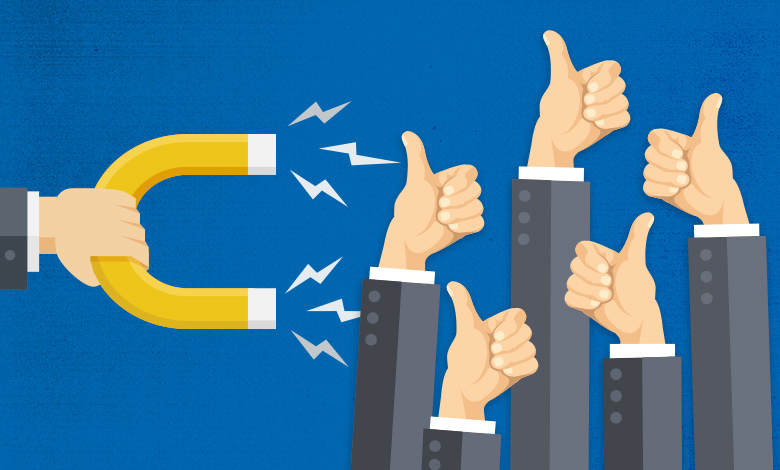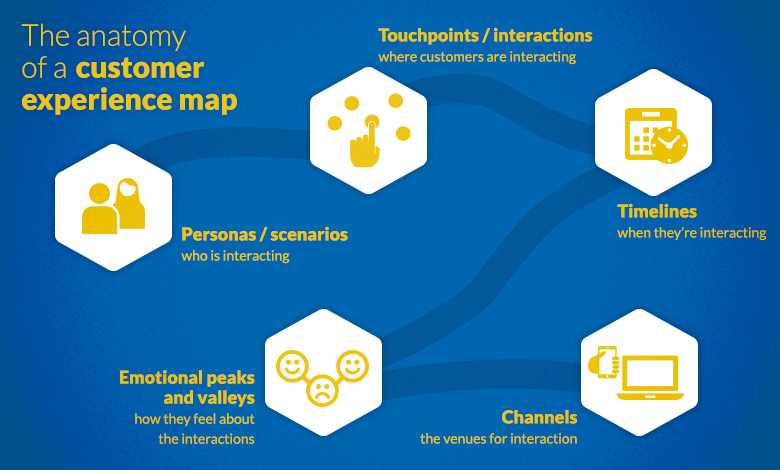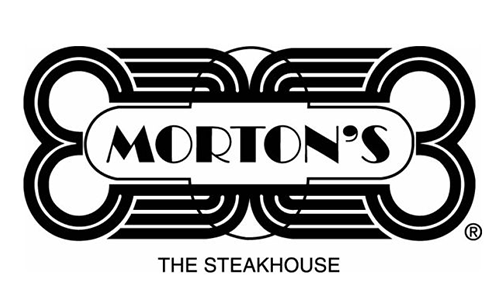Positive customer experiences drive greater engagement

According to leading experts, customer experience (or CX) is the “next competitive battleground,” one that will stand as a critical measure of business success in a world of increased consumer power.1 But what exactly does CX mean? Customer experience is the sum total of what your customer wants, does, sees, thinks, feels and likes. And delivering positive experiences to your customers across all touchpoints on their journey translates into greater engagement and ROI.
THE BASICS OF CX
Taking a holistic view
CX is made up of direct contact (the general course of business, usually initiated by the customer) as well as indirect contact (such as word-of-mouth referrals and reputation). About half of the CX equation is subconscious, driven by how the customer feels about your company.
It’s important to note that CX is not the same thing as customer service. CX is composed of many touchpoints during the entire customer journey and relationship. This includes ads and marketing, conferences, social media, proposals, project status reports and invoices. Customer service is but one of those touchpoints, focused on a specific point in time.
Logic vs. emotion
Price, quality, expertise, dependability, reputation: these are the familiar metrics by which customers evaluate companies. But emotion actually plays a more significant role than these rational yardsticks. People tend to do business with companies they like. Offering the best product isn’t enough if customers don’t enjoy working with you. Companies that achieve likeability and a sense of shared values attract more loyalty and longevity among their customers.
Read on to learn about how you can increase the quality of the customer experience with your company with these three steps:
1. Understand your “WHY”
2. Understand your customers
3. Use emotional marketing techniques
STEP #1:
UNDERSTAND YOUR “WHY”
Research on customer journeys shows that organizations “able to skillfully manage the entire experience reap enormous rewards: enhanced customer satisfaction, reduced churn, increased revenue, and greater employee satisfaction.”2
What’s your WHY?
As a marketer, you naturally think “customer first.” To improve CX, your first impulse is most likely to start by gathering information about your customers to understand them better. However, we contend that companies must know themselves first. Remember, it’s all about the feelings: customers are looking to buy into your deeper purpose. So when you’ve done this initial legwork to understand WHY you do what you do and what you stand for, it translates into more positive CX. Think about beloved and wildly successful companies like Apple, Netflix or Amazon – their purpose strongly resonates with customers, creating loyal fans.

Leaders and organizations with the capacity to inspire think, act and communicate from the inside out, starting with WHY. When we communicate our purpose or cause first, it literally taps the part of the brain that inspires behavior. Simon Sinek: How great leaders inspire action
The nuts and bolts
Every company can easily explain WHAT they do, and most have no trouble explaining HOW they do it. But relatively few companies can readily put into words exactly WHY they do it. “To make a profit” and “To stay in business” aren’t reasons, they’re results. Those companies who can best articulate and embody their WHY – and get their customers to understand and value it – tend to be the most successful. Simon Sinek presents this simple but powerful idea in a TED talk.3
What does your company believe? What gets leaders and employees up in the morning? How is your company making a positive impact? The answers to these questions form the foundation for understanding your WHY. A company with a strong grasp of its purpose can more readily connect with its customers on a personal level beyond logical and rational appeals. Instead of relying on dry lists of features and benefits to win over customers, you can begin to persuade customers to “feel” that you know what you’re doing, you are committed to doing it right, and they will find satisfaction when they choose to give you their business.
STEP #2:
UNDERSTAND YOUR CUSTOMERS
It all starts with personas
Now that you’ve taken a look at what drives you, it’s time to turn to your customers. Personas are representations of ideal customers based on your market research and data about existing customers. They provide insight into where to focus your marketing time – and they can help guide your CX efforts. Elements that help craft a persona include customer demographics, behavior patterns, motivations and goals. Personas are valuable because they give you the ability to hone in on the needs of specific users rather than “everyone.” At a minimum, personas typically address your ideal customer’s:
- Job title
- Company / industry
- Pain points
- Preferred communication channels
The customer journey map
For even more insight into what customers are thinking and feeling, the customer experience map is the perfect tool. It outlines the customer journey from the initial contact through the process of learning and engaging – and into long-term trusted relationship with a company. It identifies key touchpoints and the customer’s perceptions and questions during those touchpoints, which helps marketers convert data into a story to share and use throughout the organization to improve CX.
No one-size-fits-all recipe
Now you may be wondering: is there a program I can use to build my map? What’s the most effective structure? While there is no formal template for what a customer experience map looks like, one tool we use is uxpressia. No matter what tool or method you choose, the most important thing is to include both analytical and anecdotal research for a robust representation of what the customer goes through.

Assembling and combining the data – operational, marketing, and customer and competitive research – to build your customer journey map may sound complex. The Harvard Business Review notes that “the reward is well worth it, because the fact base that’s created allows management to clearly see the customer’s experience of various journeys and decide which ones to prioritize.”2
STEP 3:
USE EMOTIONAL MARKETING TECHNIQUES
Feelings, nothing more than feelings
Humans don’t just consider rational factors when making decisions. Studies show that emotions greatly influence consumer choices.4 We don’t think our way forward – we feel it. Developing an emotional connection elevates the customer experience, helping you break through the static and create a loyal customer base willing to talk positively about your brand – and deliver repeat business.
Antonio Lucio, the new CMO of HP, says “Brands that are able to transcend the rational dimension of their product and build a place in consumers’ hearts, will remain relevant for a long time.”5
Keep it positive
Negative emotional marketing can indeed create a sense of urgency (scare tactics to prevent dangerous behaviors like smoking or drunk driving, or using anger to spur solutions for injustice, for example) but positivity increases sharing and engagement. A 2010 study of the most-emailed New York Times articles found that emotional articles were shared more often, and positive posts were shared more than negative ones.6
Tugging the heartstrings: not just for B2C
Emotional marketing is mostly considered the province of consumer marketing, but the principles can apply to B2B as well. Business decision-makers may tell themselves they are driven by facts and hard numbers and logic, but the truth is that their feelings about companies very much sway them as well. It requires more subtlety for marketers to work this angle in B2B compared to gushy sentimental ads, but it is a totally valid area to consider.
Make the most of effective emotional triggers.7
Trust |
Be transparent. Play up the company / product track record. Incorporate proof points to show that you have substance behind the style and are in it for the long term. |
Value |
WIIFM (What’s In It For Me) is a powerful force. Don’t just talk about why your company is awesome – tell customers how they will benefit. |
Belonging |
Tap into the human need to be a part of something: a movement, a family, a social network, a specific feeling. |
Gratification |
Once you’ve addressed a customer’s pain points, attend to the features that will satisfy and delight them. And of course, highlight speed. |
Leadership |
Own your space. Be a trend-setter. Create industry standards. Most importantly, be clear about your “why”8 – your organization’s purpose – to inspire and connect with an audience. |
As marketing expert Graeme Newell says,9 Coke isn’t in the “beverage” business – it’s in the “good times with close family” business. You can see this formula over and over in their marketing: friends and family coming together to celebrate. Coca-Cola’s feeling is joy and a sense that we are all one. What do people feel when they deal with your company? You’ll know if you’ve done the work to determine your WHY.
All about how you say it
It’s easy to inject good CX into your standard marketing copy. Focus on the customer and their needs.
Customer-centric / good CX copy, friendly |
Buzzwords, corporate speak, all about you / low CX copy, arrogant |
|---|---|
| In today’s changing world, you face new challenges. ACME understands how to shape your strategies and uncover your opportunities. Together we will guide your path forward. | ACME is the world leader for innovative solutions. No one else can match our 100+ years of best-in-class experience. We have the top experts and most robust integrated global capabilities. ACME is always #1. |
And keep it conversational and clear. Avoid long, super-complex sentences. Choose more active and direct wording. Talk their talk by using words your customers prefer (which means you need to know your customer!).
Elevating CX across channels
Consult your customer journey maps and personas: what are the critical touchpoints for your customers? What do they care about? No matter how you’re communicating or what your industry, there’s a way to inject some emotion. A few examples we love:10

Gaylord Opryland hotel found out that a customer loved their alarm clocks, which played light music. She’d been searching for one on social media. The next time she arrived at the hotel, two alarm clocks were waiting in her room. Score!

Lego sent a young longtime fan of the toys a new action figure when he lost his favorite.

Mortons delivered a man a porterhouse steak as he arrived at an airport when he jokingly tweeted about it at the beginning of his journey. The staff member drove 23 miles there. The company was rewarded with super-complimentary tweets.

Trader Joes made a special grocery delivery to an elderly man in inclement weather. They even recommended additional items to fit into his special low-sodium diet.
Parting thought
Price, quality, expertise, dependability, reputation: these are the familiar metrics by which customers evaluate companies. But emotion can actually play a more significant role. Let Signal put our collective skills to work improving your CX.
References:
- https://www.gartner.com/doc/3069817/customer-experience-new-competitive-battlefield
- https://hbr.org/2013/09/the-truth-about-customer-experience
- https://www.ted.com/talks/simon_sinek_how_great_leaders_inspire_action?language=en
- https://www.psychologytoday.com/blog/inside-the-consumer-mind/201302/how-emotions-influence-what-we-buy
- http://www.forbes.com/sites/kimberlywhitler/2016/02/14/developing-an-emotional-connection-with-customers-insight-from-hps-cmo-antonio-lucio/#69b6d4512e24
- http://blog.hubspot.com/marketing/emotions-in-advertising-examples#sm.00000crtjo5feldppq63dh2njeis3
- https://www.entrepreneur.com/article/205240
- https://www.ted.com/talks/simon_sinek_how_great_leaders_inspire_action?language=en
- https://www.youtube.com/watch?v=0r33zUmjftQ
- https://www.helpscout.net/10-customer-service-stories/





